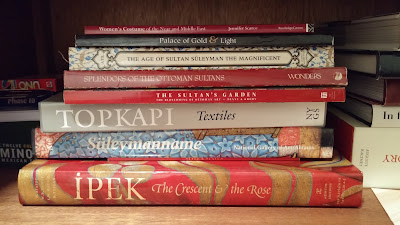A Pair of Bodies circa 1600
Mine are made from three layers of linen: a heavy linen canvas lining, a medium weight interlining, and a light weight fashion fabric. The synthetic whalebone sits in channels between the two heavier linens. I chose to bind it in self fabric instead of the original leather.
The pattern is from the Tudor Tailor. You can buy it as an actual printed paper pattern, or you can draft it up from their book of gridded patterns. Mine is from their paper pattern. I made some sizing adjustments: I took the top of the neckline down over an inch, I narrowed the straps, shortened the center front at the bottom point, and I gave a bit more room at the center front bust like the original bodies have (the center front edges taper to be wider at the bust and narrower at the waist).
These are not fully boned like the original. I used 6mm whalebone in the front and back and 4mm at the sides. The front is fully boned but the sides and back only have a few bones, mostly to keep the tabs flat. I find I rarely need much support or stiffness at the sides and back of my bodices or stays.
The bodies are mostly sewn by machine. The boning channels and seams are with my usual machine, and all the edges were serged to keep the linens from unraveling. The binding, eyelets, and whipped seam allowances were all done by hand. All of the supplies can be found at Burnley and Trowbridge Company.
In the photos I am wearing a linen smock with a high ruffled collar, a silk taffeta petticoat, and a linen coif. You can use the Tudor Tailor for the smock pattern. The coif pattern is close to several extant ones as found in Patterns of Fashion 4 (which also has many smock patterns). You can also find many coif patterns online.














MglobimimgaChicago Alison Davis click here
ReplyDeletesnipmentergse
Beautiful!
ReplyDeleteAn assortment of experts and experts are now available to assist couples adapt to the challenges of their way of life together. Marriage Counseling in Cincinnati
ReplyDeleteVery nice post. I absolutely appreciate this site. Continue the good work!
ReplyDeleteshop floral dresses